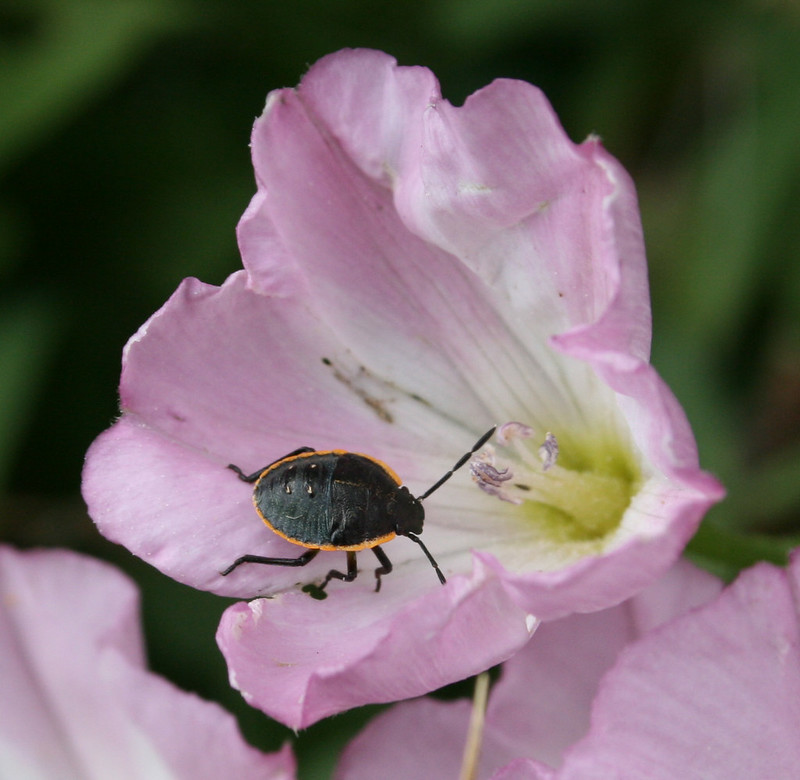Science in the news: AI biodiversity, bed bug chaos, and puffy planets

Over the last few weeks, scientists have discovered a particularly “puffy” planet. AI has continued to expand its horizons; not only can it write your coursework, but now it can help improve biodiversity. And, there’s been a bed bug scare in Paris, which is steadily becoming a larger problem as we make homes more habitable for us and consequently them. These are just a few of the latest science stories in the news.
1700 times puffier than planet Earth
Scientists have discovered a new “super-puff” planet, known as TOI-1420b, which was announced in a paper recently published in Nature. Among others in her research group, Stephanie Yoshida at the Harvard-Smithsonian Centre for Astrophysics in Cambridge, Massachusetts, analysed data from NASA to identify yet another unknown object in our night sky.

NASA’s data, which revealed TOI-1420b, comes from their Transiting Exoplanet Survey Satellite. A small dip in solar light emission from the star TOI-1420 first made scientists at the Harvard-Smithsonian Centre aware that something was awry. Not a one time thing, the data showed this decrease in solar light from TOI-1420 was a weekly occurrence, insinuating there was a planet orbiting the star, blocking the line of sight to Earth.
After analysing the data, scientists found that the dip was caused by TOI-1420b (not a name that trips off the tongue), as it circled the star TOI-1420, just like the Earth orbits the Sun.
TOI-1420b is a particularly noteworthy planet due to it’s physical characteristics. Through additional telescopic observations, the team at Massachusetts calculated its mass and volume, which show 1420b to be a huge 1700 times larger in volume than Earth, but only 25 times larger in mass. TOI-1420b has an extremely low density. For comparison, Jupiter, approximately 300 times heavier than Earth, is only 11 times the volume.
The reason for it’s voluminous and puffy nature was concluded by scientists to be a result of an 82% gaseous atmosphere surrounding 18% planetary mass, which is mostly composed of hydrogen and helium. Not particularly habitable for humans!
AI proves environmentally friendly
AI is ever improving and evolving, and is now able to assess the variety and diversity of a forest just by putting an ear to the floor… or something.

Wildbook, an AI developed by WildMe, was successful in automatically counting giraffes – recognising each individual long necked mammal from their distinct features, such as coat patterns or the shape of their ears. In doing so, in 2018, Wildbook was able to catalogue a whole population of giraffe’s in just two days from pictures, far quicker than a team of humans.
Now in 2023, AI has developed further. Not only is it able to catalogue species visually, but also audibly. In a paper published in Nature Communications this October, scientists from Germany and Ecuador detail how deep learning AI can ‘enable tracking biodiversity recovery in tropical forests’ using audio soundscapes.
As well as havings effects on CO2 absorption and climate change, deforestation leads to substantial loss of biodiversity, with over 60% of all terrestrial vertebrate species living in tropical forests. Restoration of forest structure can be relatively quick, working within a few decades. However, recreating the biodiversity that has been lost can take much longer, due to the complexity of ecosystems and the variety of species found within them.
Being able to track biodiversity recovery is especially important for this reason: recovering biodiversity and the ‘idiosyncrasies of conservation’ are complicated. Lead author Jörg Müller and colleagues have shown, with bioacoustics and metabarcoding, that AI monitoring tools can effectively quantify biodiversity in tropical forests.
This would allow a cost-efficient and robust way to monitor biodiversity in restored forests, which will be crucial to demonstrating the success of conservation projects.
Bedbugs are back, and may be here to stay
You may have heard that bedbugs are having their moment in Paris right now. And apologies for the scare, but bedbugs are likely to be pretty prevalent now, everywhere. The warming climate and increasingly well insulated and centrally heated housing across the globe creates a perfect living situation for bedbugs.
Don’t worry, you’ll know if you have bedbugs or there’s a bedbug outbreak – things will get pretty itchy. Also, to sooth your potentially frantic mind a little more, bedbugs aren’t actually all that harmful. Generally, the worst that will happen is inflammation and itching, as bedbugs aren’t effective vectors of disease.
The problem with improved central heating and increasing global temperatures is that heat accelerates a bedbug’s life cycle. Bedbugs are ectothermic, so their body temperature is regulated by external heat sources.
Warmer temperatures, which Paris has been experiencing over recent weeks, boost their energy and metabolism, causing them to grow and develop faster. Warm houses maintain this environment for bedbugs to thrive in, leading to a far quicker increase in bedbug numbers.
A further helping hand in increasing the bedbug population is evolution. Evolutionary adaptation, from chameleons which blend into their environment to avoid prey to colourful frogs alerting others of their dangerous nature, is inevitable. Unfortunately, bed bugs are evolving to become resistant to the chemicals we use to get rid of them.

To more effectively eliminate these more resistant bed bugs, different avenues are being explored. High heat, pore-blocking oils and polymer traps are among some solutions being investigated. Pest control can be expensive, though, and as long as bedbugs remain relatively harmless, bedbugs will continue to exist in warm and dark spaces in crowded places, not just in Paris.
Read more about recent scientific discoveries in our previous science in the news article, featuring asteroids, brain maps and artificial DNA.







